Amazing nature #30 - Leatherback turtle
Leatherback turtle (Dermochelys coriacea)
Surely in your classes on your school days, you were taught that turtles have their own house and therefore their shell is their armor, their shelter, their everything. Today we will talk about a unique turtle, a turtle that lacks a hard shell to shelter from danger. This is the leatherback turtle. Its scientific name is Dermochelys coriacea and lute.
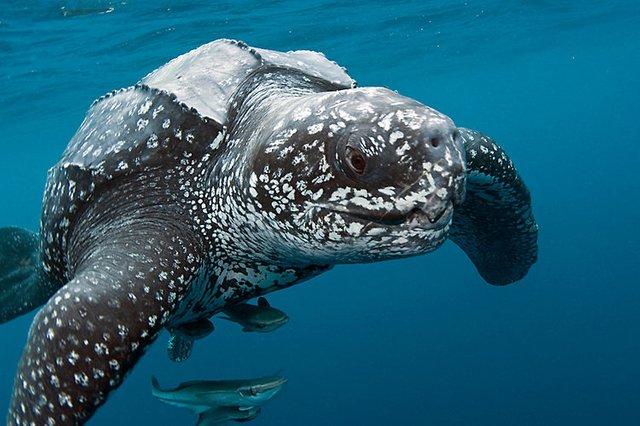
Main characteristics
The name is due to the structure of its shell, the peculiar shape that is like a kind of skin without large scales with a texture similar to leather. It has some polygonal pieces called osteoderms which gives the necessary protection, its function is to strengthen the body to suffer less in any impact or predator and finally serves as an excellent rudder when swimming in the water.
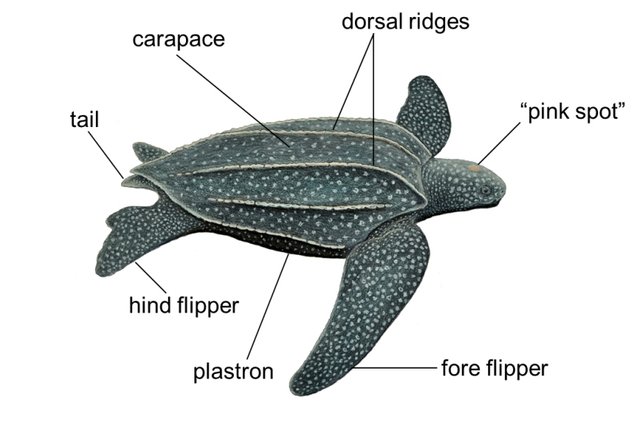
After hatching and the first months of life, the turtle has scales similar to that of other relatives, but as it grows it gradually loses until it disappears. Their skin is dark with some white spots. Its plastron can vary in color and has five ridges.

Size of the leatherback turtle
Due to its size, we are in front of the biggest turtle of all the species of existing sea turtles. It is common that this reptile measures between 1.30 and 1.75 meters. Surprisingly, the head represents 20% of its body, larger than any other species and females can easily reach 500kg.
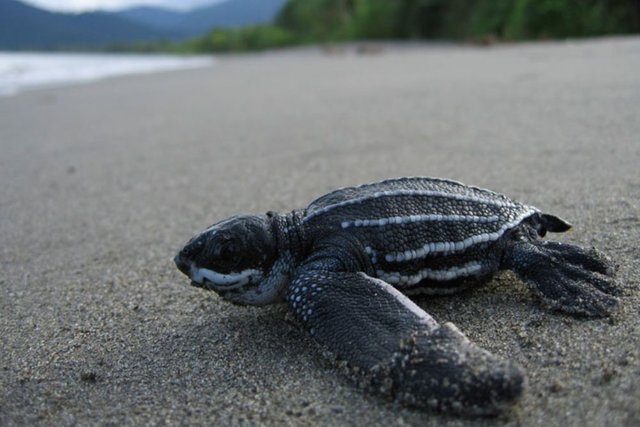
It also lacks nails, but its fins make it one of the best swimmers in the ocean.
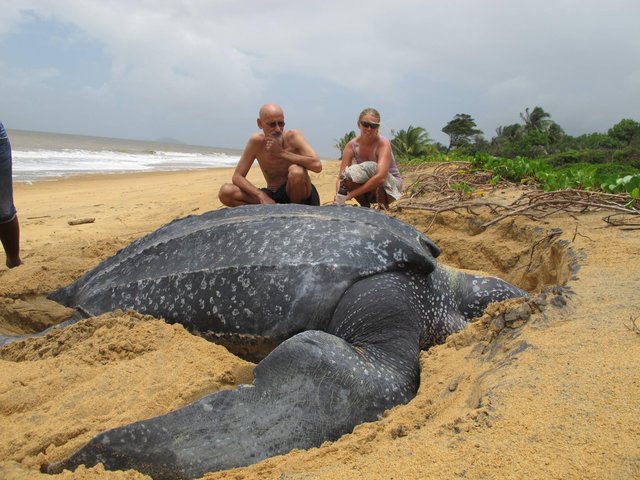
Habitat of Dermochelys coriacea
Because Dermochelys coriácea is an excellent swimmer, it can cover great and wide distances, it dives at great depths, it loves to be up to the amazing mark of 1000 meters and generally does not go deeper than 200 meters. She spends about 15 minutes, returning to the surface.
It is present in much of the globe, perhaps in temperate climates or in subarctic waters, as well as in the warm Caribbean Sea.
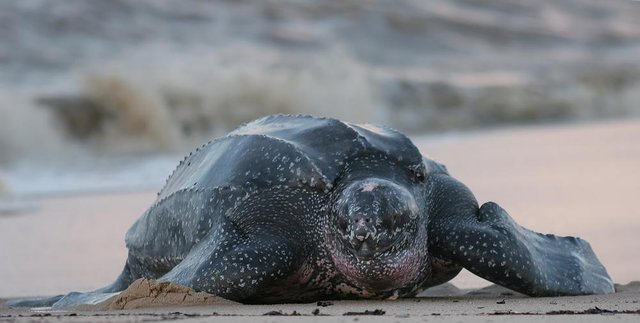
Of all the areas where it can be found, the most common is to see it near temperate waters to both the east and west of the United States and Canada. Its wide area of distribution is due to its high capacity to tolerate a high range of temperatures. They are able to maintain their body temperature up to about 18 degrees above the temperature of the water at which they are found. This way they do not freeze and can swim quietly.
Food
Lacking teeth to grind mollusks with hard shells, their diet is basically made up of soft bodies. Jellyfish are the main prey of the leatherback turtle. You can perfectly eat more poisonous jellyfish, as they are immune to the toxins they release when they are in danger.

However, again her anatomy helps her because her mouth is W-shaped and that works like teeth and has excellent corneal projections in the esophageal area which helps her to process more efficiently the snacks this great turtle tastes.
Her diet is based almost entirely on soft bodies. Jellyfish are the main prey of the leatherback turtle. You can eat more poisonous jellyfish perfectly, as they are immune to the toxins they release when they are in danger.
Reproduction
They usually last in their normal life cycle about 35 to 40 years. Their fertile age is between 9 and 14 years. Females in that age usually make about 5 to 10 nests annually, at 10-day intervals. Although not all the year this prepared to be able to procreate. And they have to wait long periods until they procreate again.
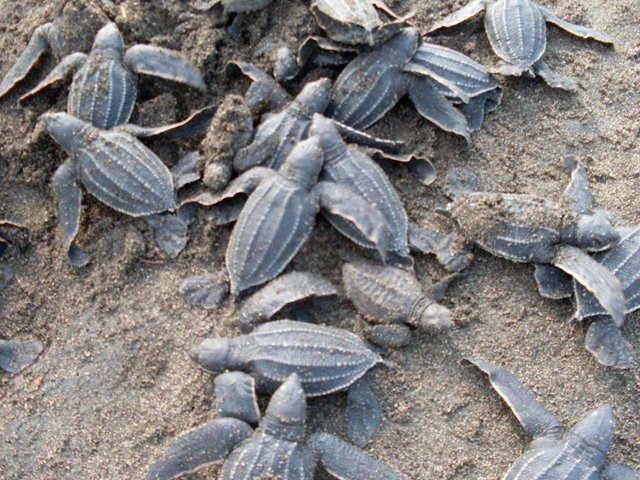
Nesting takes place at night when the turtle leaves the sea to lay its eggs above the high tide line. This ensures the survival of the eggs in the face of possible waves and high tides. Females choose for nesting those beaches whose continental shelf is smaller and therefore have easier access and free of rocks or corals. Nor do they want those beaches that have very abundant currents with large waves.
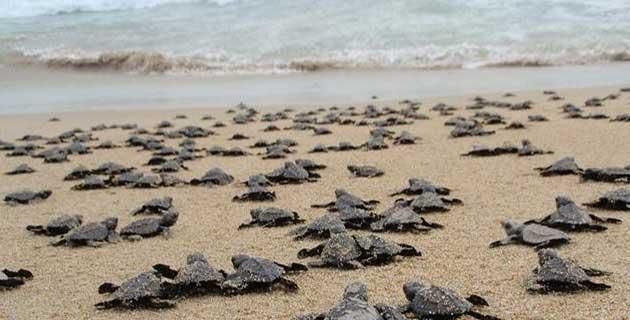
Each time it nests, it lays about 80 eggs the size of a billiard ball. These eggs have yolks. It also lays about thirty or so eggs without yolk and in a variable way. It does so to confuse predators who take an egg without a yolk and stop attacking the nest.
Thank you for reading =D


If you liked reading this article, feel free to FOLLOW ME, UPVOTE and RESTEEM! It's always appreciated =D. Thank you all for your support and see you soon for the news flamingirl's adventures!


Thank you for posting this. I like turtles. One time I did a presentation on sea turtles. It was sea turtles in general, but I believe that a Leatherback is the largest kind of sea turtle and they don't have shell, so their back is very tough for protection. (I can't remember if you said those two things in this post, so please forgive me if they are and I missed it.)
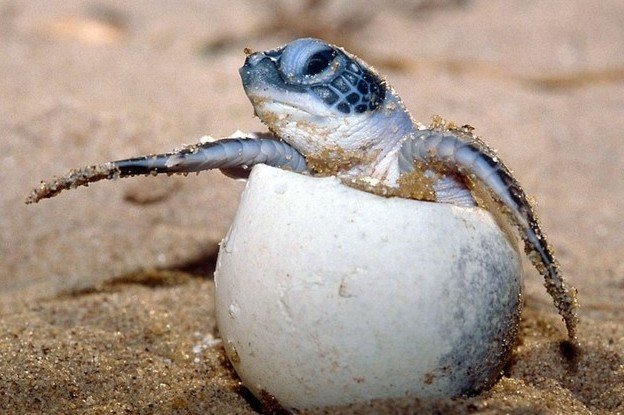
Here is a cute picture of a turtle coming out of its egg that I used for my presentation:
Congratulations! This post has been upvoted from the communal account, @minnowsupport, by Calisay from the Minnow Support Project. It's a witness project run by aggroed, ausbitbank, teamsteem, someguy123, neoxian, followbtcnews, and netuoso. The goal is to help Steemit grow by supporting Minnows. Please find us at the Peace, Abundance, and Liberty Network (PALnet) Discord Channel. It's a completely public and open space to all members of the Steemit community who voluntarily choose to be there.
If you would like to delegate to the Minnow Support Project you can do so by clicking on the following links: 50SP, 100SP, 250SP, 500SP, 1000SP, 5000SP.
Be sure to leave at least 50SP undelegated on your account.